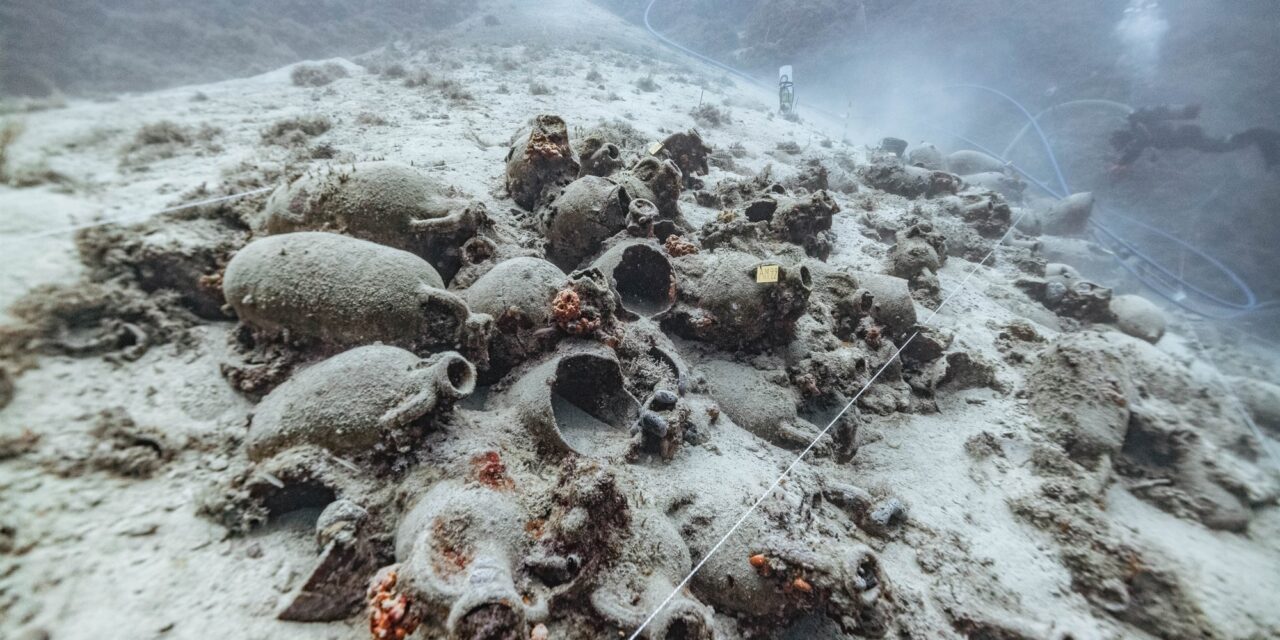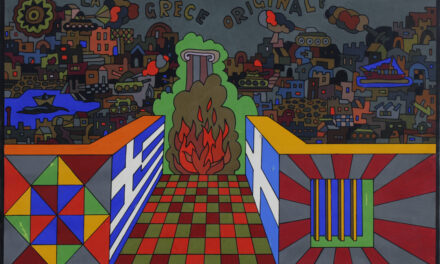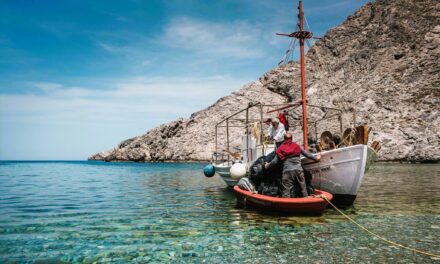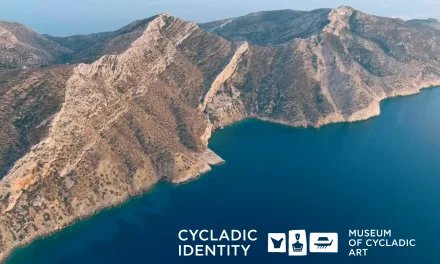The Fournoi Islands, located in the eastern Aegean near Ikaria, are reknown for the high number of ancient shipwrecks discovered in their surrounding waters – more than in any other area of the Aegean Sea. These small islands have become a major archaeological hotspot and one of the most significant sites for underwater archaeological research. Since 2015, when the Ephorate of Underwater Antiquities launched an ambitious project to document Fournoi’s underwater cultural heritage, more than 60 shipwrecks have been discovered. (Cover photo: Amphorae from “Shipwreck 15” at Fournoi, Stefanos Kondos, The Fournoi Project)
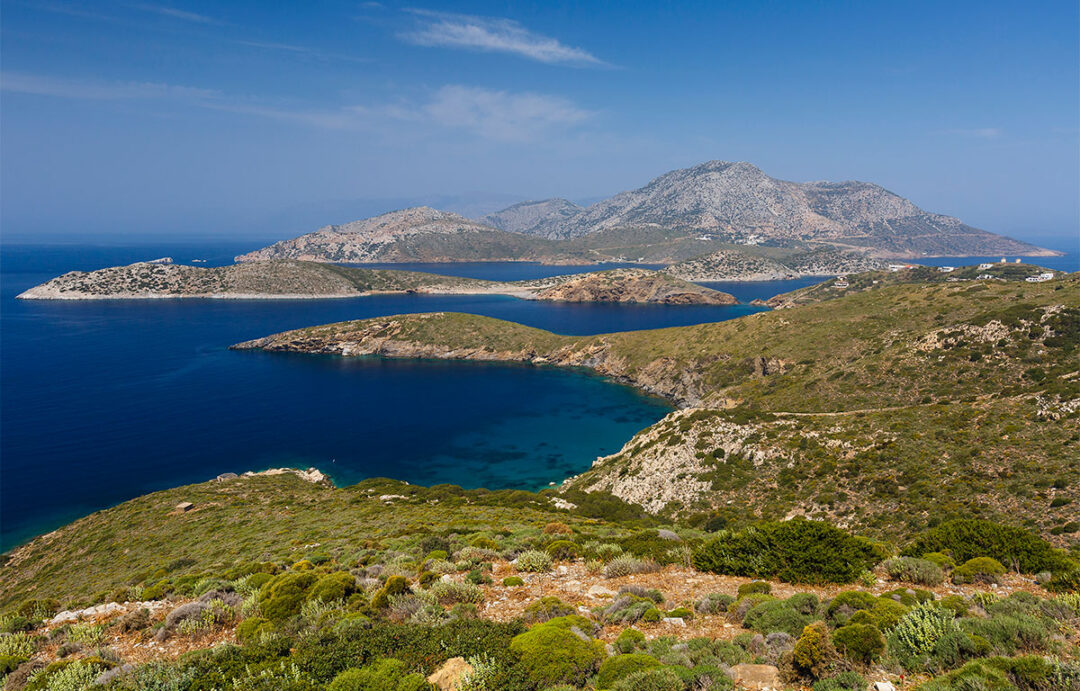
The archipelago of Fournoi (or Fourni, ancient Korseai), consists of 20 islands, islets and rocky outcrops, with a coastline stretching over 120 km. It is located in the Eastern Aegean, south of Samos and Ikaria (Photo: visitgreece.gr)
The shipwrecks discovered around Fournoi span a broad historical timeline, from the Archaic to the Roman era. They carried cargo from various regions of the Mediterranean, providing valuable insights into ancient seafaring and trade networks. These ships transported a range of goods, including wine, olive oil, fish sauce, and other commodities.

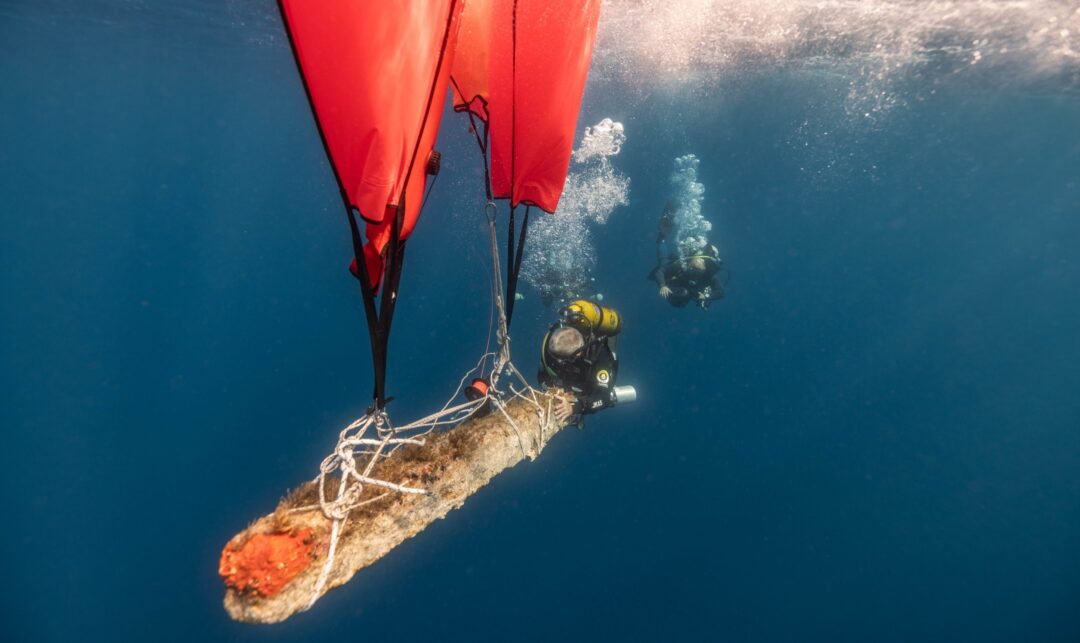
Underwater Archaeological Research at Fournoi. Archaeological research at Fournoi is ongoing, aiming to further study and document the shipwrecks. The project is led by the Fournoi (Korseai) Institute for Historical and Archaeological Research, in collaboration with the Ephorate of Underwater Antiquities of the Ministry of Culture, the University of Thessaly, and the RPM Nautical Foundation. Plans are also underway to establish underwater archaeological parks in Fournoi, making the site accessible to the general public. (Photos: The Fournoi Project)
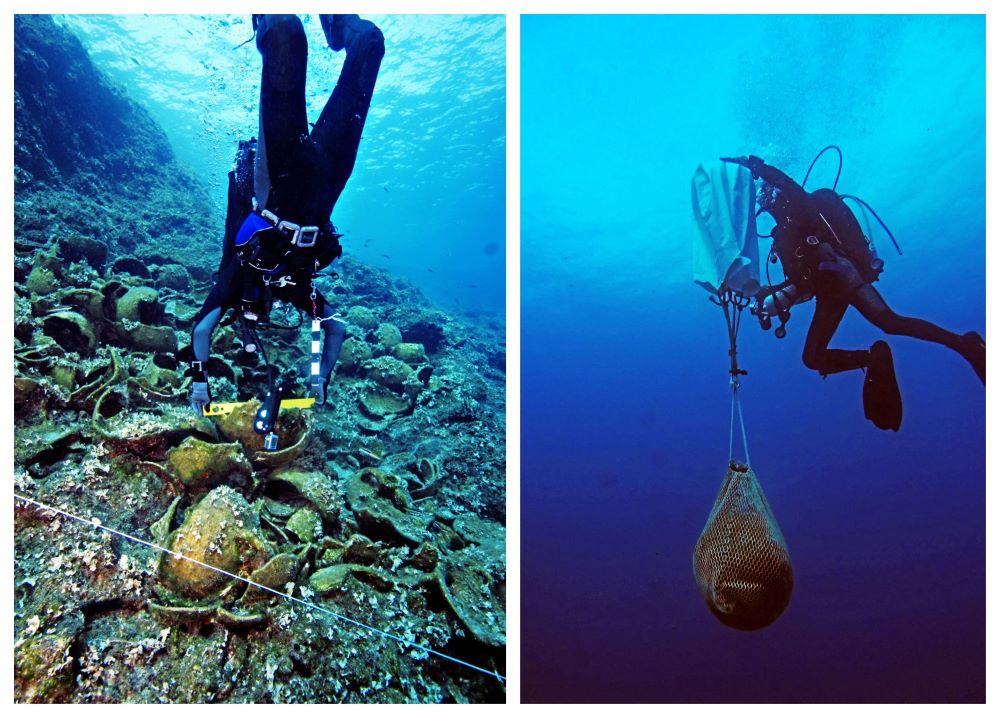
“The unprecedented concentration of shipwrecks in a single region – combined with their dispersion across all depth zones and the diversity of their cargoes – make the Fournoi Archipelago an ideal field for training students in the techniques and methodology of underwater archaeology” (Photos: Ministry of Culture, Ephorate of Underwater Antiquities)
Presenting the results of the decade-long underwater research in Fournoi, as well as plans for the creation of a museum and underwater archaeological parks, Giorgos Koutsouflakis, Assistant Professor of Underwater Archaeology at the University of Thessaly and one of the general directors of the Fournoi Research Project (alongside Ephorate of Underwater Antiquities archaeologist Dionysios Evangelistis), noted: “Wherever we dived, there were ancient shipwrecks, ceramic deposits, or anchors linked to ancient seafaring. I’ve worked in many places in the Aegean, but the wealth of findings we first encountered in Fournoi in 2015 — we’ve never seen anything like it anywhere else”. He added: “The project had a difficult start, but with the help of the local community and sponge divers from Kalymnos, the number of discovered shipwrecks began to grow. Today, the oldest dates to 570–550 BC, and the most recent to the early 20th century, with the greatest concentration of shipwrecks found from the Roman and Late Roman periods (4th–7th century AD), from which 32 shipwrecks have been documented”.
Of particular interest is the oldest shipwreck, “Shipwreck 13” (6th century BC), which contained many Samian amphorae. Also noteworthy is “Shipwreck 7” (4th century BC), believed to have originated from Chios, as well as the slightly later “Shipwreck 27” (3rd century BC), whose amphorae suggest a more international trade network, with links to regions such as Rhodes, Kos, Knidos, and Campania. Equally important are the hundreds of individual artifacts discovered, including 2nd century AD oil lamps bearing the inscriptions of the lamp-makers Lucius and Octavius. (Source: kathimerini.gr, culture.gov.gr)
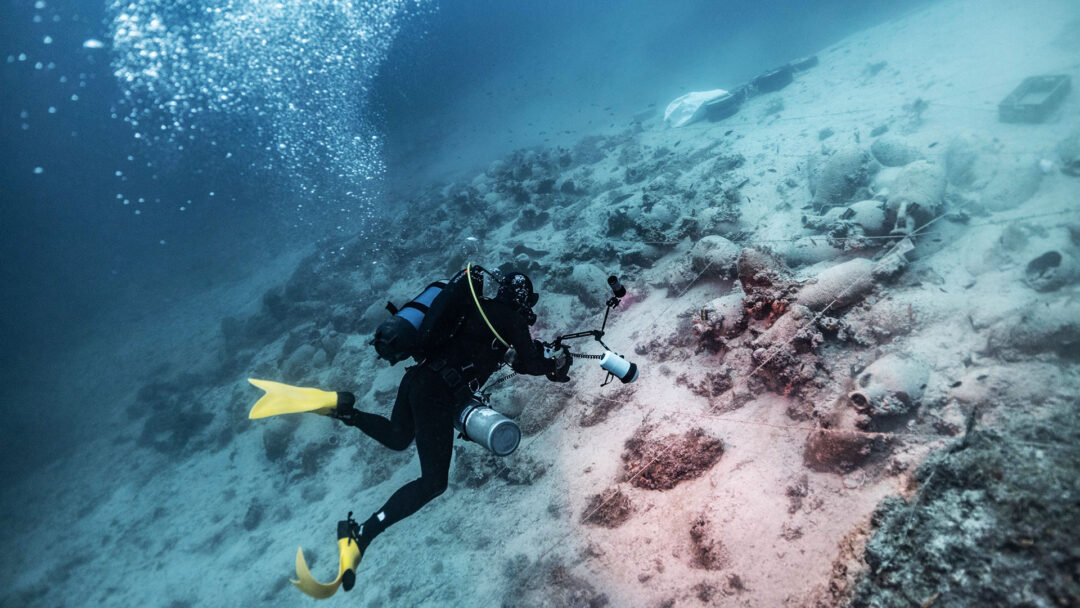
Diver at “Shipwreck 15,” from which 31% of the artifacts from the seabed of Fournoi originate (Photo: Stefanos Kondos, The Fournoi Project)
In 2021, Koutsouflakis and his colleagues focused their efforts on a shipwreck from the early Byzantine Period, dated between 480 and 520 AD – a site they have continued to study ever since. The wreck most likely dates to the reign of Emperor Anastasius I (491–518 AD), of the Leonid dynasty, known from historical sources for his tax and monetary reforms, which strengthened the state treasury and enabled expansionist policies. The ship likely measured no more than 15 meters in length and carried up to 20 tons of cargo and reached the seabed as a single unit. This shipwreck, designated “Shipwreck 15,” was chosen for its remarkable diverse cargo. It includes eight different types of amphorae originating from Crimea, Sinope, Heraclea Pontica in the Black Sea, and the Aegean, while of the ceramic loads—tableware—was produced in Phocaea, in northwestern Asia Minor. Located in the windy Aspros Kavos area, the site presents several challenges. The wreck lies at a depth of 40–50 meters, on a steep sandy seabed near cliffs, making it accessible only by boat. This year, a team of 25 divers participated in the research, representing a range of specialties — archaeologists, architects, conservators, professional divers, photographers, filmmakers, and both undergraduate and postgraduate students. (Source: kathimerini.gr, culture.gov.gr)
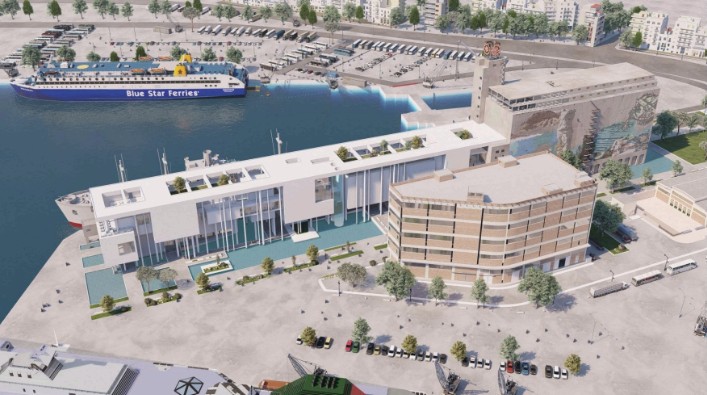
The National Museum of Underwater Antiquities in Piraeus is set to open its doors to visitors in 2026. More than 2,500 artifacts will be on display, accompanied by a wide array of technological applications, fully equipped conservation laboratories, and state-of-the-art storage facilities. The Museum will showcase the treasures of the Greek seas and serve as a landmark cultural institution for the country’s largest port. It is currently the largest cultural development project underway in Greece. (Photorealistic depiction, Source: Ministry of Culture)
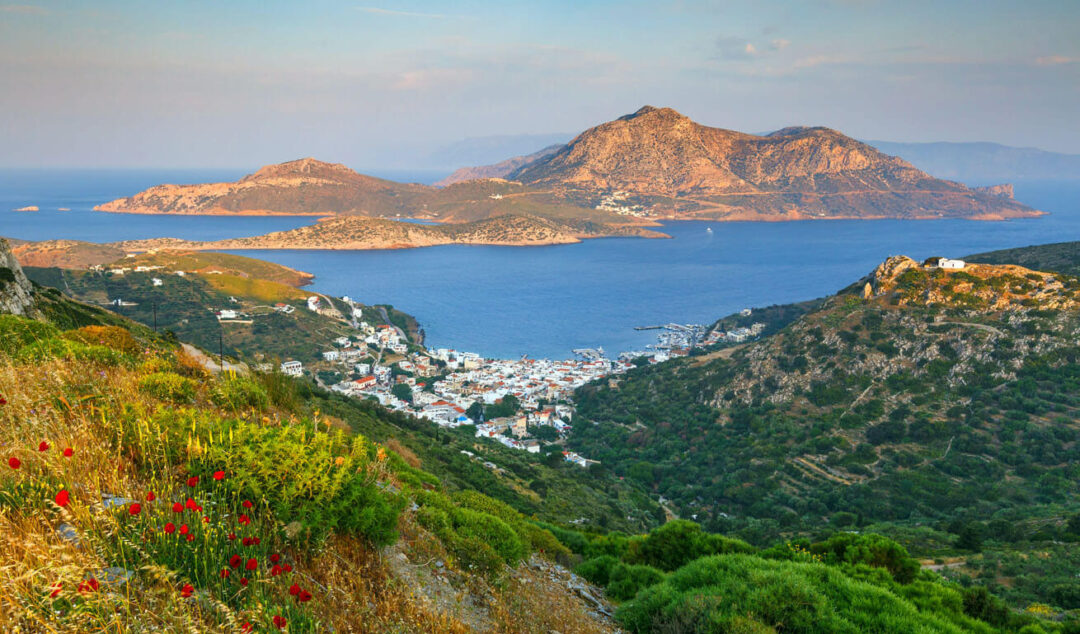
Fournoi is not a single island, but a group of small islands, of which only two – Fournoi and Thymaina – are inhabited. This archipelago, far from the crowds, offers visitors a journey back in time—a chance to experience the charm of old Greece up close. The islands are steeped in history, with ancient remains scattered throughout the landscape. (Source: visitgreece.gr)
Known as islands of fishermen and beekeepers, Fournoi provides visitors with all the basic comforts. However, the primary livelihood of the locals is not tied to the land, but to the sea. The island boasts a large fishing fleet—remarkably large for its size—and has become one of the most important fishing centers in the Aegean. As a result, it is a paradise for seafood lovers, offering unique opportunities to enjoy top-quality, freshly caught fish. (Source: visitgreece.gr)
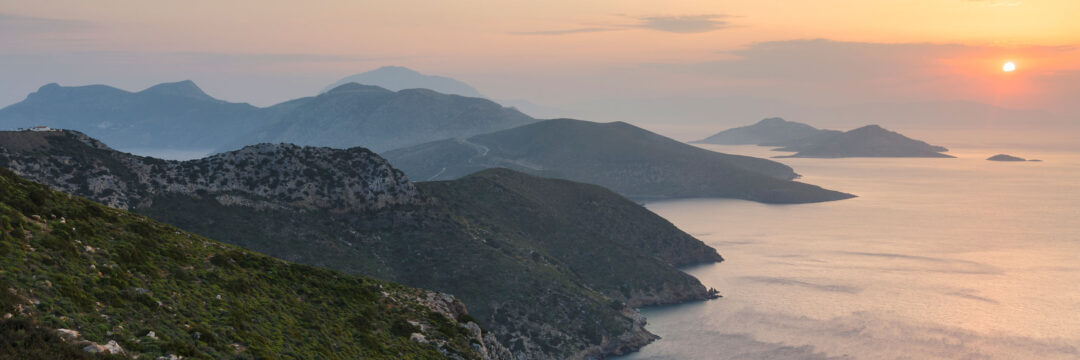
General view of the Fournoi Archipelago. In antiquity, the Fournoi were known as the Korasian Islands. The group’s varied coastline, with its secluded beaches and numerous bays, is unique in the Aegean. This topography made it an ideal base for both Greek and foreign pirates from the early Byzantine period through the Middle Ages. As a result, the islands were often deserted and came to be known as the “Islands of the Koursaros” (corsairs). (Source: visitikaria.gr)
Because many species of aromatic plants – such as thyme, savory, sage, heather, schinos, wild cumin, olives, fennel and mandrake – grow on the Fournoi islets, they are included in the European Union’s “Natura 2000” programme. The Mediterranean Monk Seal (monachus monachus), along with various species of dolphins. Also inhabit the area. The archipelago is additionally classified as one of Greece’s Important Bird Areas (IBA), serving as a breeding site for many rare bird species and a critical stopover for migratory birds. (Source: visitikaria.gr)
Among the most treasured secrets of Fournoi are the secluded beaches—pristine sanctuaries that offer tranquility and the untouched beauty of nature. Far from the noise of popular tourist destinations, these hidden gems invite visitors to savor the serenity of the landscape, making each visit truly special.
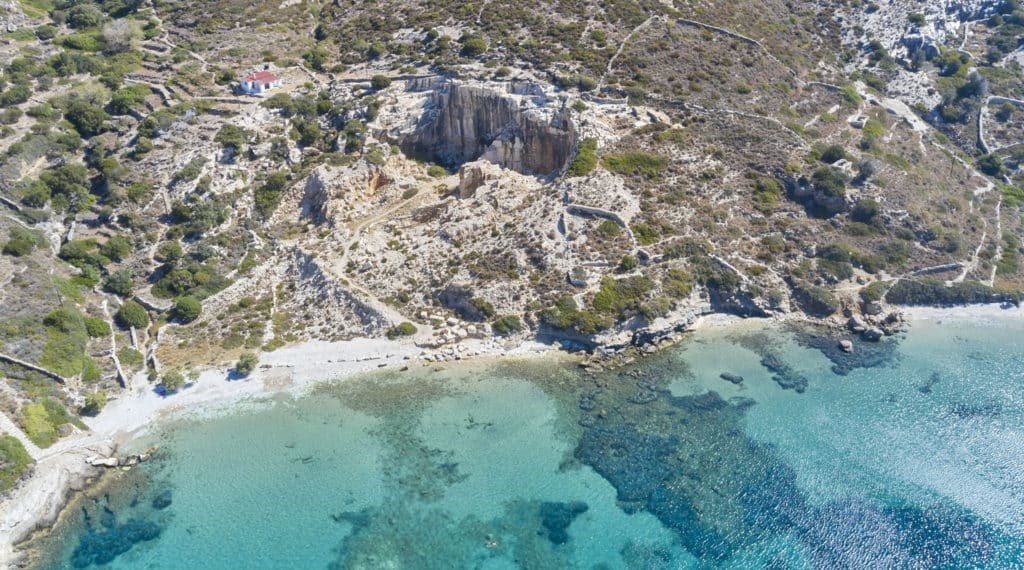
Unique among the beaches of Fournoi, Petrokopio offers the chance to swim through history. Ancient marble ruins scattered along the shore serve as a reminder of the island’s historic past, making every visit a journey through time. Once an ancient quarry, its marble was highly sought after by many civilizations, adding historical significance to this one-of-a-kind beach. (Source: explorefourni.gr)
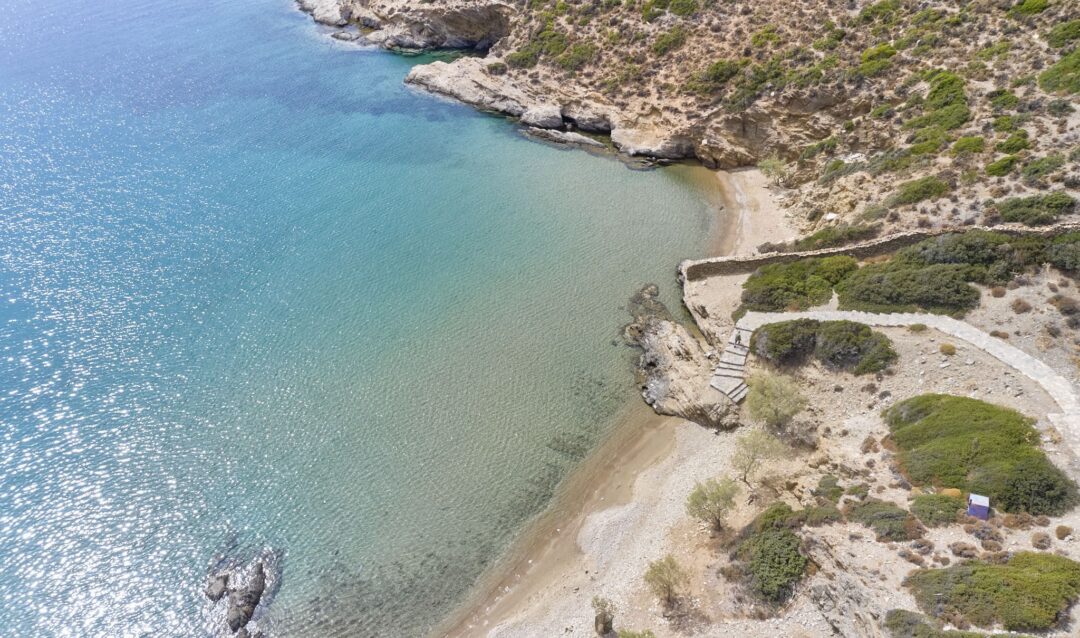
Vlychada Beach enchants visitors with its small pebbles and natural shade, thanks to the scattered trees lining the shore. It is ideal for those seeking a quiet retreat, where the only sounds are the gentle lapping of the waves and the rustling of leaves. (Source: explorefourni.gr)
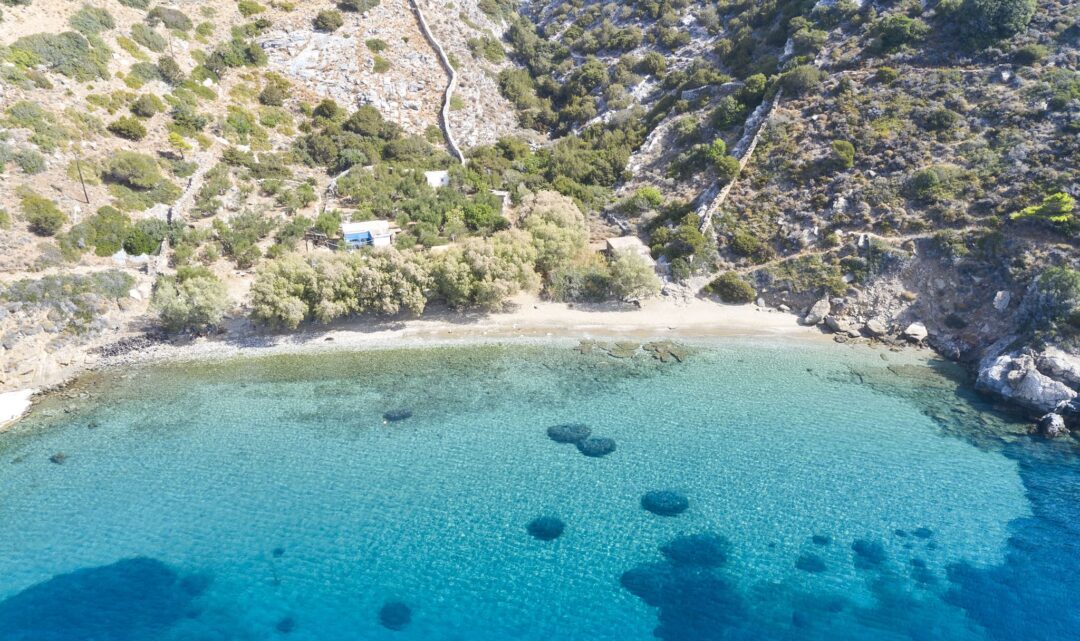
Agia Triada Beach is famous for its fine sand and exceptionally peaceful atmosphere, making it an ideal choice for those seeking relaxation away from the noise. A few trees along the shoreline provide welcome shade, enhancing the overall experience of tranquility and natural beauty. (Source: explorefourni.gr)
Read also:
Byzantine shipwreck in Fournoi archipelago reveals its secrets
Peristera: Greece’s first underwater museum
Four shipwrecks to become underwater museums
Ancient shipwrecks discovered off Kasos
Pavlopetri: The Oldest Submerged City in the World
“Fiscardo wreck” in Kefalonia: The largest Roman shipwreck in the eastern Mediterranean
Secret treasures of Greece – Sapientza
Underwater excavation at the historic Mentor wreck site (Kythera, 1802)
National Marine Park of Alonissos, a gem of biodiversity
I.A.
TAGS: ARCHAEOLOGY | MARITIME ARCHAEOLOGY | TOURISM

